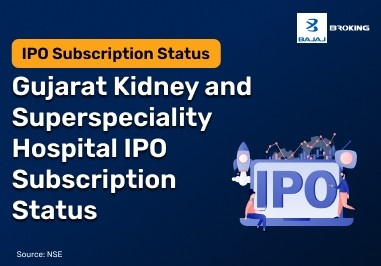However, like any other form of equity investment, there are a few pitfalls associated with IPOs. You need to have a proper IPO investment strategy in place to make the most out of your opportunities. Keep reading for the best IPO investment tips for new investors.
Essential IPO investment strategies and tips for beginners
The points below highlight some of the essential IPO investment strategies in India:
- Conduct your own research
The very first IPO investment tip you must remember is to conduct your own research before investing. While looking for upcoming IPOs, you will come across numerous opinions on which company to invest in. Instead of going by “he said/she said”, make the decision based on the data you have found.
Unlike publicly-owned companies which have to make regular disclosures, IPO issuing companies do not have a previous track record. Hence, due diligence is necessary from your side for an informed decision.
You will find most information about these companies in their Red Herring Prospectus; however, consider cross-checking them with other sources. You can carry out an in-depth study of these companies’ backgrounds, aims and competition from news sites, press releases and third-party research. This will help you gain an idea of their present status and the genuine nature of their proposal.
- Check the company’s performance
As you cannot check the past performance of an IPO stock, analysing the issuing company’s performance is a wise IPO investment strategy. This includes studying the company’s annual performance, especially its revenue, profit margin and debt levels.
You can also choose to compare them with the annual performance of its rivals. This will give you an idea about its competitive edge and position in the sector.
- Read the Red Herring Prospectus thoroughly
A Red Herring Prospectus (RHP) is an essential document that a company releases for retail investors. This prospectus is prepared by underwriters and submitted to the market regulator for approval.
It carries every detail about a company, including its background, business model, historical growth data, and risks. This document also states the company’s plan to implement the funds they raise with IPO.
For instance, a company can plan to pay off its debts or buy equity shares with funds from its IPO. However, this can reflect that they are underperforming and can be a risky investment.
The SEBI has to approve a company’s Draft Red Herring Prospectus (DRHP) before it can launch its IPO. Therefore, you can consider this as a genuine document that can answer all your basic questions.
- Go for companies backed by strong underwriters
It is a known fact that a strong and reputable company will attract a big investment banker’s team to underwrite their DRHP. So, one of the noteworthy IPO investment tips is to look for companies that are backed by reputable underwriters.
Sometimes, opting for companies with boutique brokers can be beneficial. This is simply because; they have a comparatively smaller client base than mainstream investment bankers. This allows you to buy pre-IPO shares.
- Know where your funds are invested
As you research the company, consider ensuring whether the issuer company is planning to invest your funds wisely. This will help you get an idea of your returns on investment in the long run.
For instance, an issuer company planning to use its IPO funds only for repaying large amounts of debt can be a red flag. If a company does not invest in its growth and improvement, it may be unable to provide a good ROI in the long run. But a company issuing an IPO to raise funds for research or developing new products could be a better investment.
- Study current trends in the stock market
Knowing how the stock market works is necessary for any investment. You can use this knowledge to analyse the current market trends and their effects on the company. This will help you know about the apt time for you to invest in an IPO.
Thus, studying the current market trends to predict future ones is a beneficial IPO investment strategy for both new and seasoned investors.
If you are new to the stock market and planning to invest in an IPO, consider seeking financial assistance from a registered advisor. They can help you study stock market trends and plan IPO investments accordingly.
You can also open a Demat and Trading account with Bajaj Broking to invest in IPO. With this, you can start your IPO investment journey with zero additional charges for the first year. Moreover, you can participate in the upcoming IPO investment in a more simplified manner.
- Avoid giving in to FOMO
Fear of Missing Out (FOMO) is a social phenomenon which causes a person to make poor decisions to deal with the fear of missing opportunities. You can observe FOMO when your peers make rash investment-related decisions based on popular trends.
No doubt, some brands with high brand recognition have the potential to generate good returns for their investors. However, you must not invest blindly in a brand’s IPO by following the majority. Instead, consider doing your own research about the company to evaluate whether their goals align with your investment strategy.
- Consider waiting for a lock-in period
Some IPOs carry a lock-in period during which any investor purchasing their shares cannot sell them. This period might vary between issuers but they exist. While choosing a company to invest in an IPO, consider knowing about the lock-in period (if any).
By holding securities for this lock-in period, you can judge the company’s performance. Based on this judgement, you can sell or further hold your shares as this period ends.
- Analyse your risk appetite
IPO investment is a risky endeavour like any other equity-related investment. Therefore, you must necessarily assess your risk appetite before planning to invest in a company’s IPO.
To avoid facing major losses, consider browsing the RHP thoroughly to understand the internal risks and external threats faced by the company. Also, try avoiding companies that will cost you more than your savings.
- Formulate your exit strategy
This is an essential IPO investment strategy if you are aiming for short-term investments. Before you invest, consider creating a plan on what stage you should sell your IPO securities.
You should also plan your loss levels while purchasing IPO shares. This is beneficial for your finances as it cushions you from major losses. You can set up book profits or stop-losses for the listed shares based on your investment strategy.
IPOs are a great investment method to earn substantial benefits. However, which company is best will always have a subjective answer. Therefore, every investor must have a foolproof.














